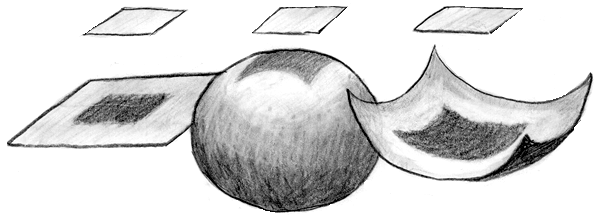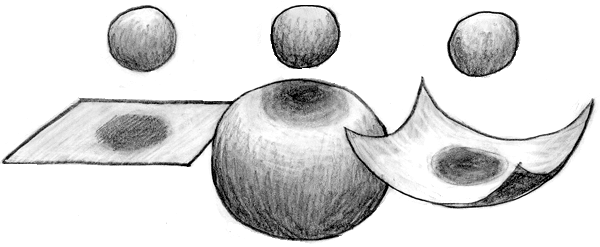
Realistic 4-D Shading

When we graph a four dimensional function with a series of level sets, these level sets take the form of surfaces situated in three dimensions. Since we are dealing with multiple surfaces when graphing four dimensional functions, we run into the problem of how to shade and shadow upper surfaces and lower surfaces. The upper surface in a graph comes between the light source above the graph and the lower surfaces. This causes the upper surface to cast a shadow on the surface below it. Here are some examples of how certain shadows might be cast:
Square planes above various surfaces, lit from above:

Spheres above various surfaces, lit from above:

Refer to the 3D Shading Tutorial if you are having more basic shading trouble.